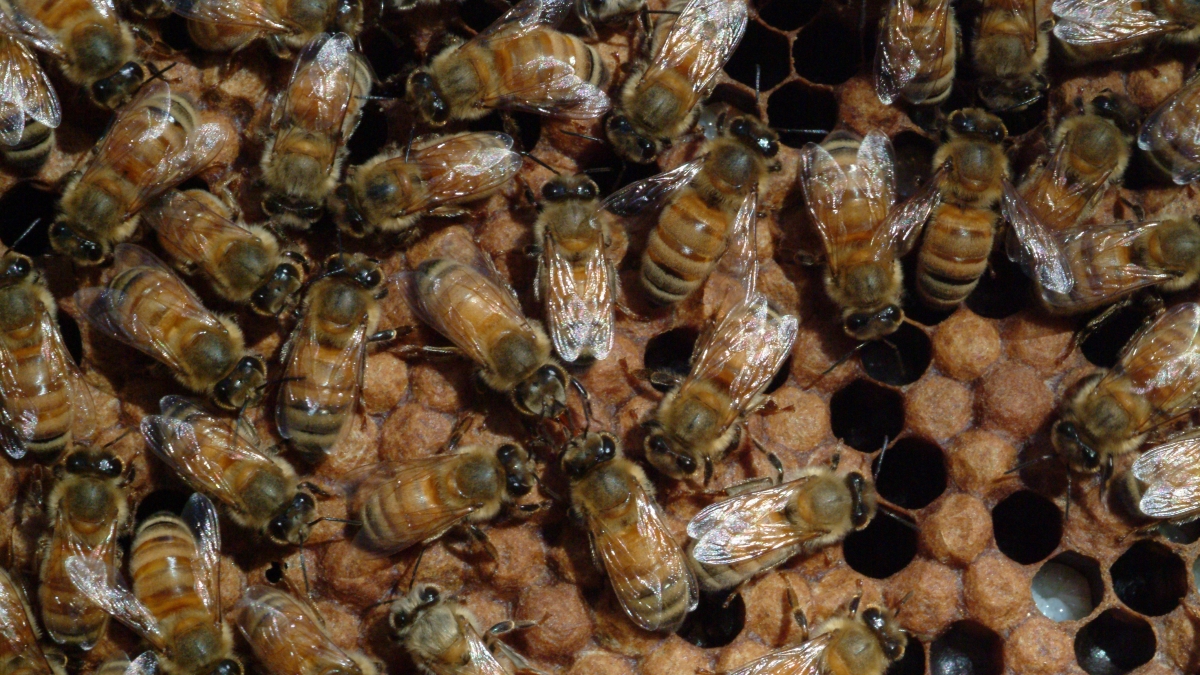11 buzzworthy bee facts your provost wants you to know

Have you heard the buzz on campus? Thanks to Phoenix's rising temperatures it's bee season – and many residents are coming into contact with these complex creatures.
Fortunately, Arizona State University Provost Robert E. Page Jr. is a bee expert and has some fun facts to share.
The highly cited entomologist has authored more than 230 research papers and articles centered on Africanized bees, genetics and evolution of social organization, sex determination and division of labor in insect societies. He's also written a book on the self-organizing regulatory networks of honeybees titled, "The Spirit of the Hive: The Mechanisms of Social Evolution."
1. China produces the most honey in the world
China is by far the dominant honey producer at more than 430 million tons in 2012. In the U.S., there are more than 2.74 million colonies producing honey and the value of the U.S. 2014 honey crop stands at more than $385 million. North Dakota tops the charts in U.S. honey production.
2. Bee colonies can be rented
According to the National Honey Board, the first colony rented out to help pollinate crops was in 1909. Bees are linked to agricultural crop production valued at $19 billion in the U.S. The California almond crop is entirely dependent on honeybee pollination and involves more than 1 million colonies of bees. ASU has developed a startup Pollen-Tech through the Edson Student Entrepreneurship Initiative to help pollinate crops.
3. Honeybees aren’t native to the Americas
Honeybees were brought by European settlers during the 1600s. Europeans had developed techniques for managing bees and these so-called European honeybees were attractive because they could be kept in hives. Some Native American tribes called honeybees “the white man’s flies,” because the arrival of bees often heralded the encroachment of settlers.
4. Africanized bees came to the US from Brazil
The Africanized honeybees were brought to Brazil and crossbred with European honeybees. It was thought they could better tolerate the hot tropical climate in South America. Several of these Africanized colonies escaped, swarmed into the Brazilian jungle and hybridized with local European colonies. Over the years, these colonies have been spreading northward, arriving in the U.S. in 1990 and Arizona in 1993.
5. Queens don’t lead the hive
Honeybees have a fascinating social organization. Different workers specialize in different tasks. In some ways their society rivals that of any human organization. Bees' daily chores are completed without a governing body, as we understand it. In essence they live in a bustling city, each knowing exactly what they should be doing. A queen’s essential occupation is producing eggs – up to 2,000 a day in her two- to three-year lifetime.
6. What bees eat determines their lifestyle
Bees take “you are what you eat” to a new level. Although there are no genetic differences between queens and worker bees, what developing larvae are fed is critical to what role they take on. If a larva is fed “royal jelly” throughout her larval stage, she will turn into a queen bee. If the larva is fed honey and flower pollen, she will develop into a worker that lives for six weeks to several months, depending on the season.
7. Most bees you see are old
Young bees take on chores in the hive, such as nursing and feeding larvae. Older bees forage and bring back honey, water or pollen.
8. Signs of an allergic reaction
When bees sting a person, a normal response is inflammation of the area around the sting. It may turn itchy and red and last for several days. However, for a person with an allergic reaction, the response to the sting proteins is different. Histamine is released into the blood stream, affecting the smooth muscle around the trachea and lung bronchi. People can have difficulties in breathing, start sweating, vomiting, and lose consciousness. An EpiPen (epinenephrine) should be given to these patients, if they have a prescription, in addition to transporting them to the hospital. People can build up either a hypersensitivity to or a resistance to the bee venom over time.
9. Bees can improve human health
Not only are honey and beeswax valuable commodities, bees also produce pollen, propolis, royal jelly and bee venom, which play roles in alternative medicine and health food. Moreover, bee stings have been used for treatment of multiple sclerosis.
10. Aristotle and Charles Darwin studied bees
The first person known to study bees was Aristotle. He was curious about how they divided their tasks and organized their activities. His interest was also shared by Charles Darwin, who labored to understand how a colony of 40,000 bees, working in the dark of a hive, can organize and build a honeycomb. He had more success with finches.
Research on bees at ASU is contributing to understanding about genetics, longevity, Alzheimer’s disease, learning and memory, robotics and adaptive systems, social behavior and social evolution.
11. Bees get a buzz from caffeine
You may need a cup of coffee to kick-start the day, but it seems honeybees also get their buzz from drinking flower nectar containing caffeine. Scientists from Arizona State University and the United Kingdom have discovered that caffeine improves a honeybee’s memory and may help plants recruit more bees to spread their pollen.